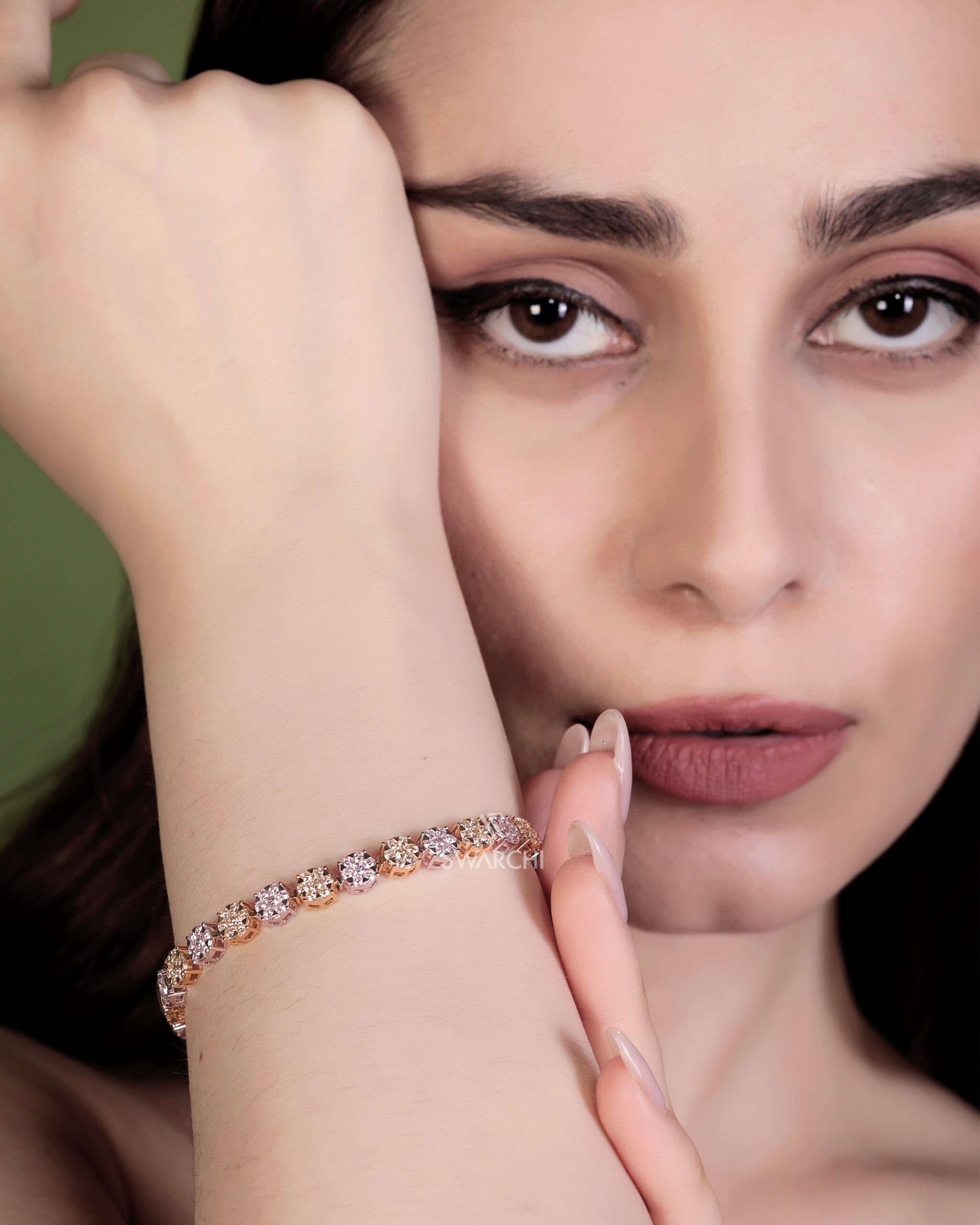Uncover the world of Natural Fancy Color Diamonds. From their vibrant colors to their unmatched value, find out why they’re so coveted.
1. Color Grades and Descriptions
- Hue: The primary color of the diamond, such as pink, blue, yellow, green, etc. Some diamonds display a combination of hues, such as blue-green or pink-orange.
- Tone: Refers to the lightness or darkness of the color, ranging from light to dark. A medium to dark tone often enhances the perceived richness of the color.
- Saturation: Measures the intensity or purity of the color. Diamonds with high saturation are more vivid and valuable.
2. Color Categories
- Yellow and Brown Diamonds: These are the most common and can range from pale yellow or brown to deep, intense hues.
- Pink Diamonds: Highly coveted and can range from soft pastel pinks to vivid, intense shades. The Argyle Mine in Australia is famous for producing pink diamonds.
- Blue Diamonds: Known for their stunning hues, ranging from light blue to deep, intense blue. The Hope Diamond and the Blue Moon Diamond are famous examples.
- Green Diamonds: These are quite rare and can range from a subtle green to a deep, intense green.
- Purple and Orange Diamonds: Extremely rare and valuable, with colors that can be both vibrant and subtle.
3. Grading System
- The Gemological Institute of America (GIA) and the International Gemological Institute (IGI) are two prominent organizations that grade fancy color diamonds. They assess the diamond based on three main criteria: hue, tone, and saturation.
- Fancy Light: The least intense color.
- Fancy: A moderate level of color intensity.
- Fancy Intense: A high level of color intensity.
- Fancy Vivid: The highest level of color intensity and the most valuable.
4. Natural vs. Treated Diamonds
- Natural Diamonds: Formed naturally over millions of years. These diamonds are highly valued for their authenticity.
- Treated Diamonds: Enhanced through processes like high-temperature high-pressure (HTHP) treatment or radiation to intensify color. Natural fancy color diamonds are not treated, and their value is significantly higher.
5. Jewelry Settings and Design
- Classic Settings: Solitaire settings, where the diamond is the main focus, are popular for showcasing the diamond’s color.
- Halo Settings: Surrounding the fancy color diamond with smaller diamonds or gemstones can enhance its appearance and highlight its unique color.
- Three-Stone Settings: Often used for engagement rings or statement pieces, this design can feature a center fancy color diamond flanked by two complementary stones.
- Custom Designs: Many opt for bespoke designs to perfectly complement the unique color and characteristics of the diamond.
6. Value and Investment
- Market Trends: The value of fancy color diamonds can fluctuate based on market demand, rarity, and the diamond’s characteristics. Pink and blue diamonds, in particular, have seen substantial appreciation in value.
- Investment Potential: Natural fancy color diamonds are often considered a good investment due to their rarity and the increasing demand. However, their value can be subjective and influenced by trends.
7. Care and Maintenance
- Cleaning: Regular cleaning with mild soap and water is recommended. Avoid harsh chemicals or abrasive materials.
- Storage: Store fancy color diamonds separately from other jewelry to prevent scratching. Consider a secure display or jewelry box.
8. Famous Examples
- Hope Diamond: An exceptionally large blue diamond with a storied history.
- Pink Star Diamond: One of the most expensive diamonds ever sold, known for its intense pink color.
- Cullinan Blue Diamond: Notable for its rare and vivid blue color.
Natural fancy color diamond jewelry not only stands out for its beauty and rarity but also provides a personal and unique touch, making each piece a cherished and often heirloom-quality treasure.


